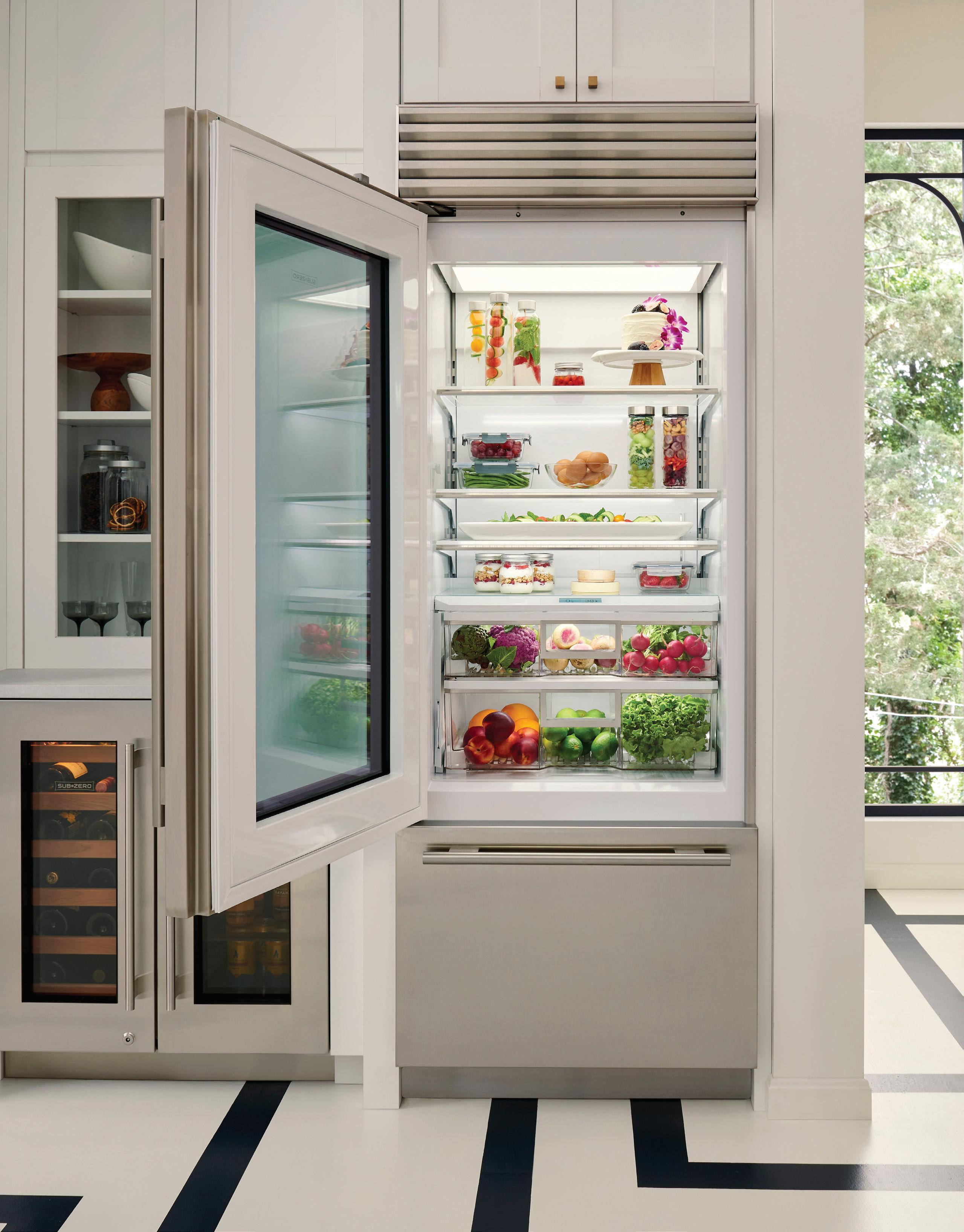
6 minute read
Timeless Design, Fresh Features
Advice EXPERT
Layering
Layering and mixing materials is another way of creating visual texture. There is no formula or rule as to how many materials to use or in what proportion they can be effectively mixed; this is where artistry comes in. Layering doesn’t need to be only in material mixes; there are endless ways to create more layering. Even floor plans can be layered by varying the axial relationships, creating unexpected dynamics.
Style
The basic design categories of traditional, modern, and transitional styles are all still strong, and none are considered passé. The infusion of a modern sensibility in much of today’s design has increased, mostly replacing decoration. Done effectively, this creates designs that are fresh and honest. Originality, personalization, and creativity can make each of these styles special in their execution. Like fashion today, the rules are meant to be broken.
THESE TRENDS
ARE CLASSICS
By Mick De Giulio
In my design career, I’ve seen many periods of changing trends. In my mind, the present time is the most exciting and the most sophisticated—the bar just keeps rising higher. Technology and unprecedented communication give access to new ideas, materials, and products. This is one of the reasons why kitchen design is stronger and more creative than ever before. Almost all of these trends are not new, yet all are current and have proven themselves. The only change is in the translation of each, which keeps evolving. For that reason, they are not only trends but classics.
Here are some of my favorites:
Texture
Materials with texture give a sense of comfort and livability— two of the most important words in design today. Examples in kitchens can be any material within the space, including wood, stone, metal, or glass, in brushed, honed, and polished finishes, and used solo or combined. Hand-crafted finish processes, like sculpting, hammering, or scraping, are techniques that can change the nature of a material, making it softer and more inviting.
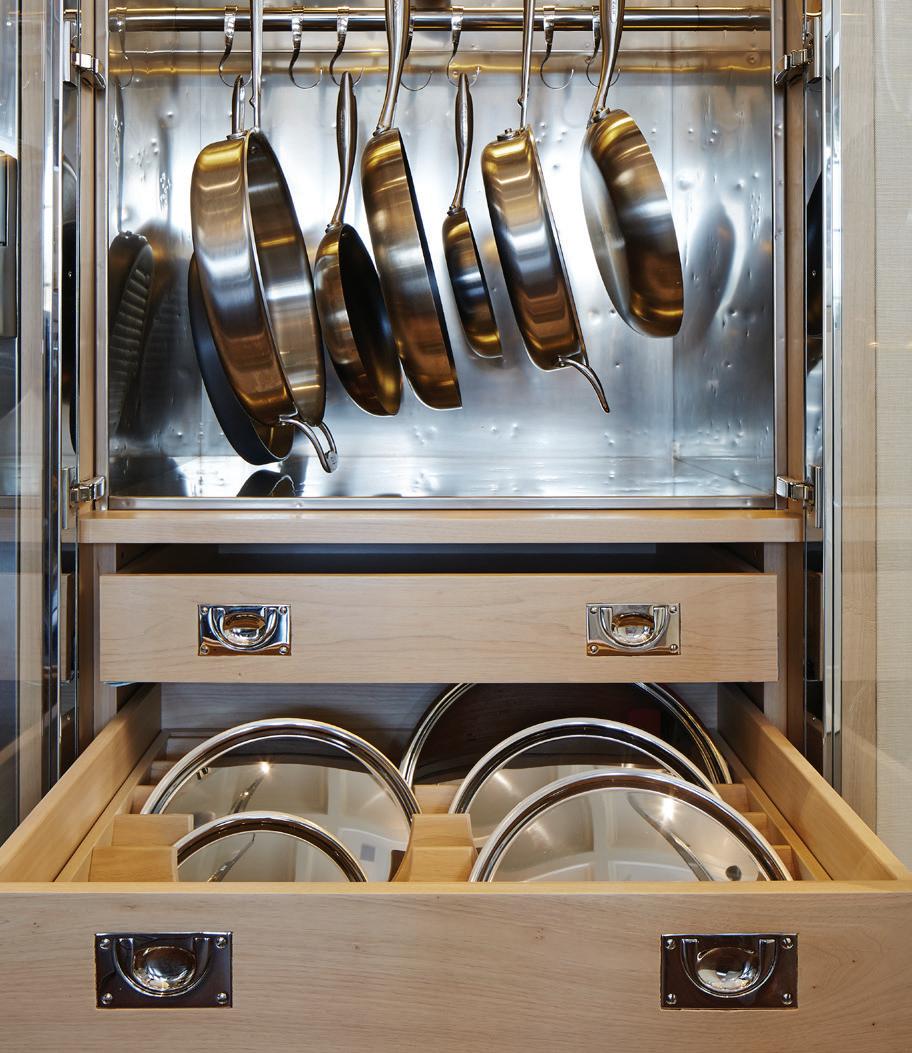
Mixing materials, such as metal and wood, adds texture and interest to kitchen design.
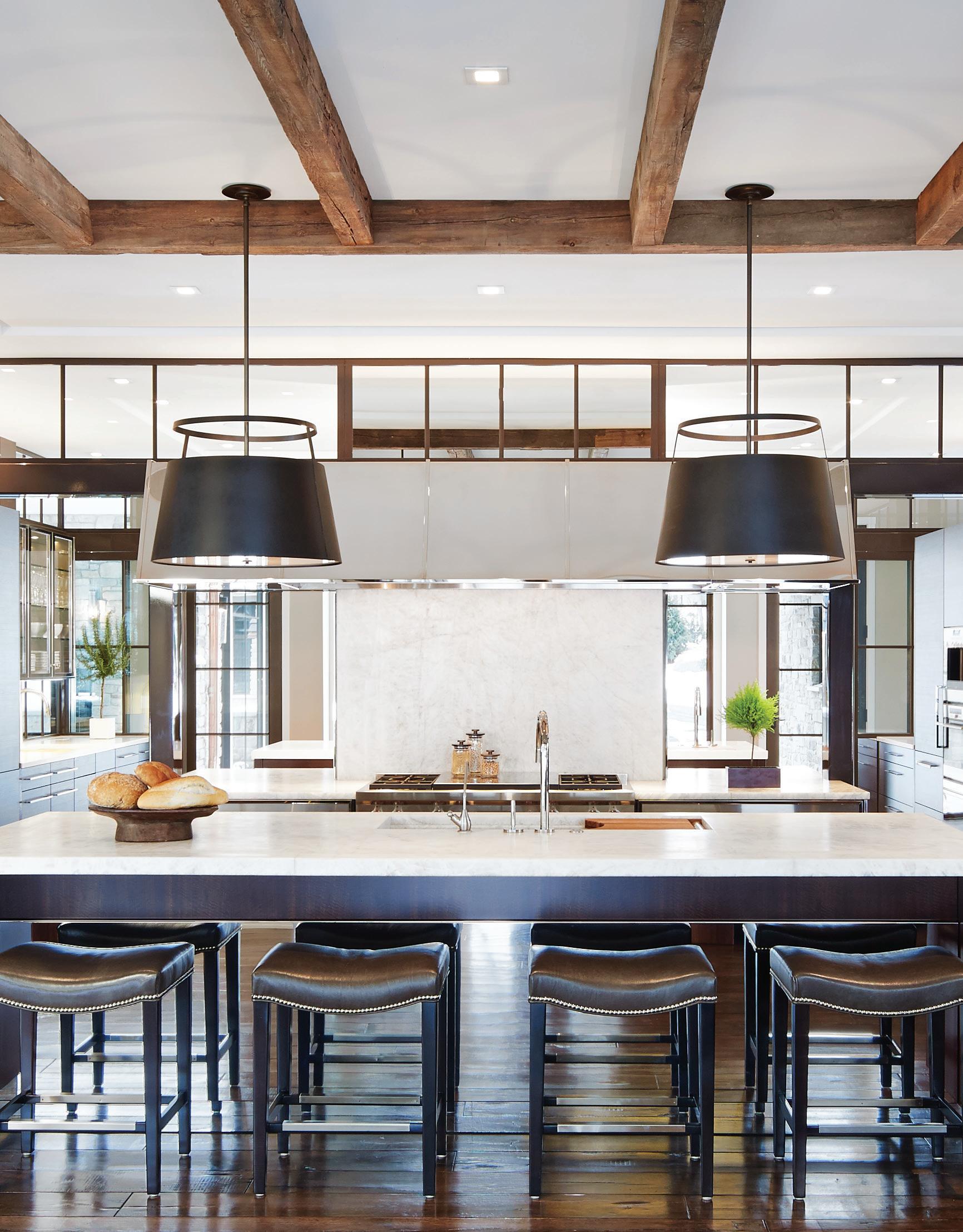
Advice EXPERT
Open Kitchen Plans
As lifestyles continue to become more informal and many people have experienced open kitchen plans, this concept is growing and continues to strongly influence the way residences are being designed. The result is more connection and flow. I believe this idea has a long life ahead.
Larger Kitchens/Larger and More Important Islands
As the sizes of kitchens have increased proportionately, so have islands. The kitchen is said to be the heart of the home, and today’s island could be called the heart of the kitchen. It is the social center and where people naturally gravitate. Eight- to ten-foot-long islands were the previous norm. Depending upon actual layouts, island lengths of 12 to 14 feet are not uncommon now. The kitchen island is also an excellent opportunity for unique signature design elements and the incorporation of a lot of functions. Even the traditional against-the-wall kitchen message center is being replaced with workstations designed within islands.
Adjoining Spaces to Support Kitchens
Butler’s pantries and walk-in pantries continue to be highly popular and are functional winners. The back kitchen is the third and newest adjoining area to support the main kitchen. Back kitchens can be large or small and can include everything from small appliance stations to fully appointed and functioning spaces with all appliances. Among the advantages, they free up the main kitchen for entertaining and hide the clutter.
The Art of Lighting
LED lighting technology has changed everything, especially now that the color spectrum can be warm, soft, and elegant. Arguably, the kitchen has more opportunity to layer lighting
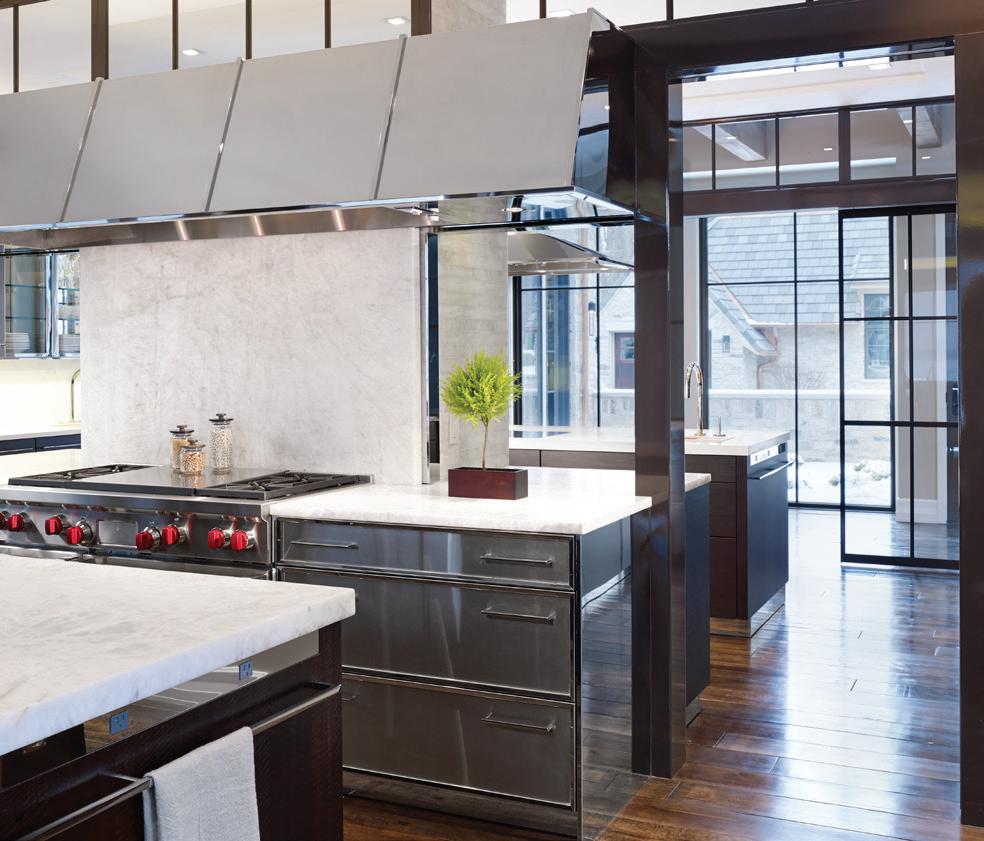
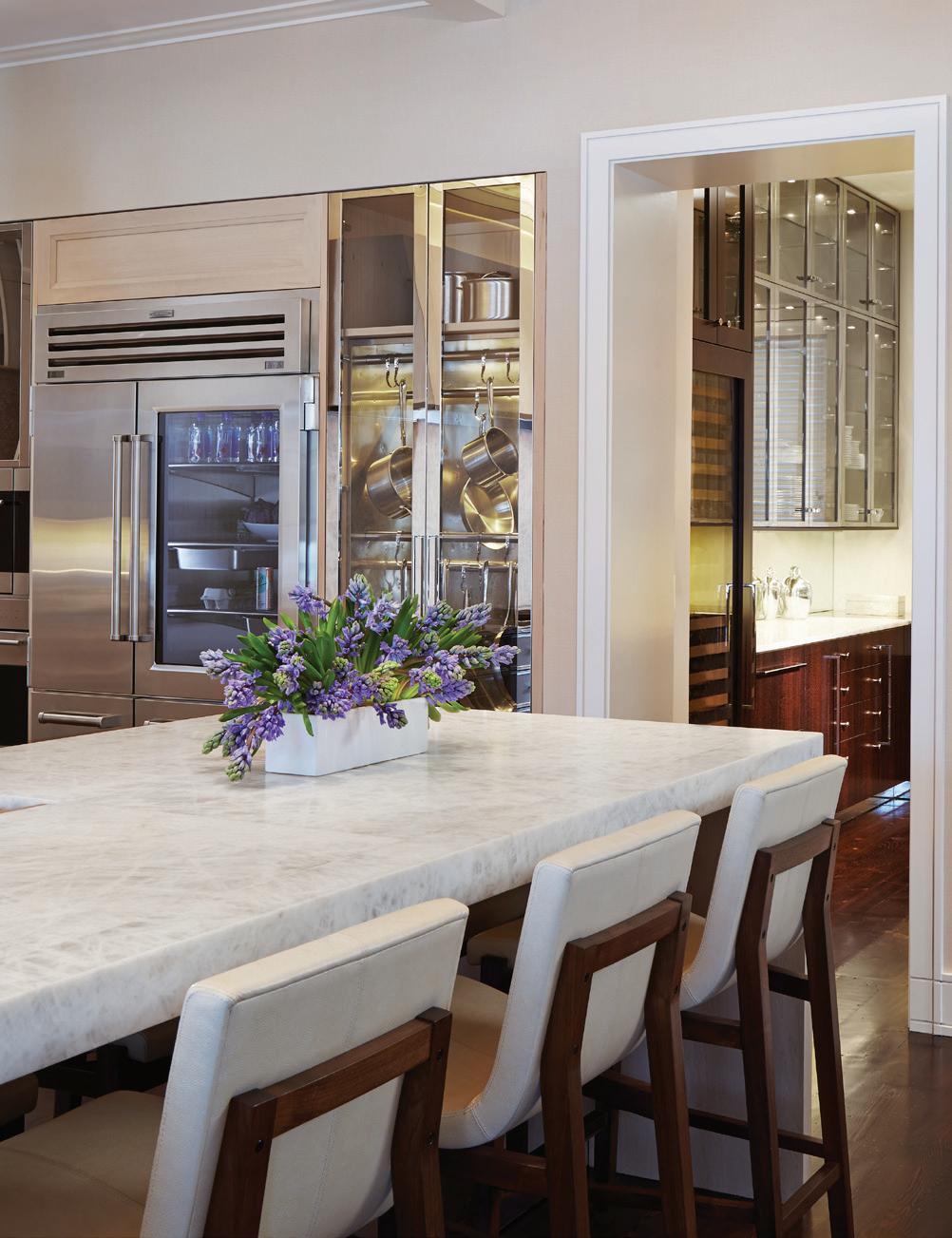
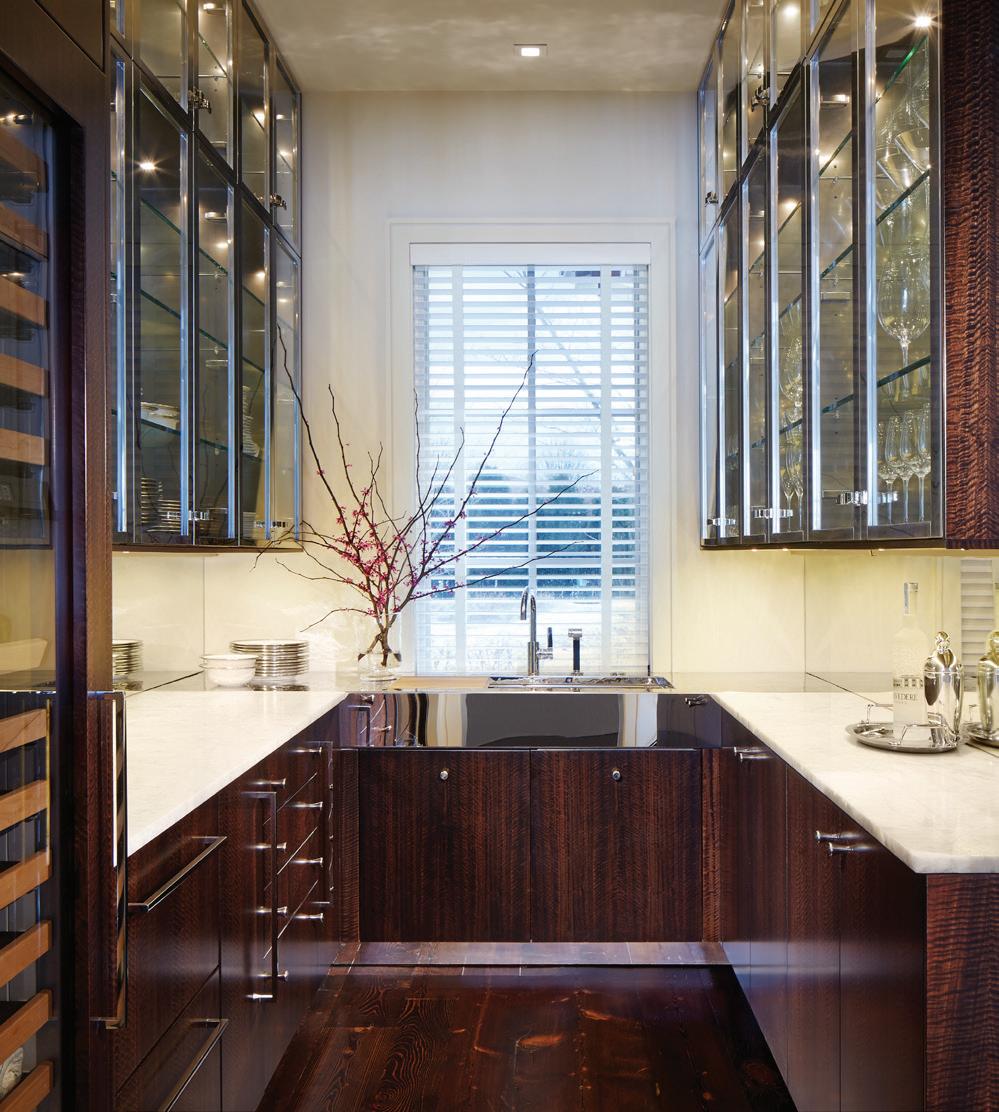
Left and Above: Adjoining spaces such as butler's pantries and back kitchens can free up the main kitchen for entertaining.
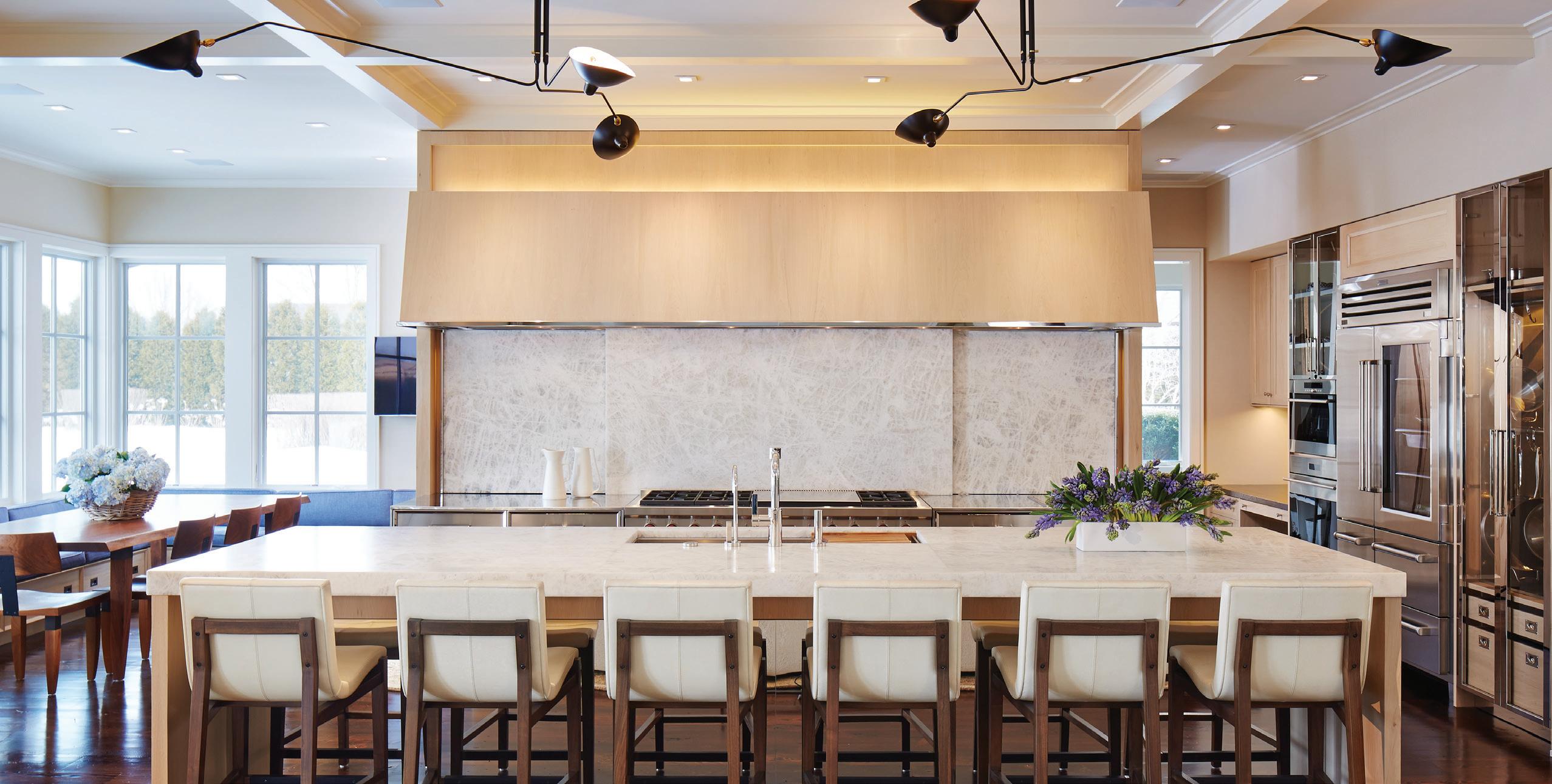
than any other space in a house. Decorative fixtures using LED technology continue to be designed as pieces of art. Even what was once considered basic utility lighting is being done with LED lighting. A great example is Sub-Zero’s new interior refrigeration lighting system, which provides better visibility, eliminating shadows and flattering the interior contents. And maybe best of all, LED is environmentally friendly.
Material Engineering
Long strides have been made in the engineering of wood flooring and veneers, as well as synthetics such as porcelain and laminates. Warping and moving of wood flooring is now more highly controlled with engineered wood boards. Wider planked boards are now more feasible and, unlike the engineered wood floors of the past, can be refinished multiple times. Once considered less expensive and less luxurious alternatives, porcelains and plastic laminates have entered the luxury-level category and can be not only beautiful, but also unrivaled in their durability.
Metal
There is a sense of elegance and permanence when metals are used in the design. Used alone or as complements to other basic building blocks of wood, stone, and glass, the result is a feeling of precision, depth, and more visual texture. Warm metals like brass or silicon bronze in raw or burnished and patinated finishes can be mixed with white metals like stainless steel and German silver. Even a small amount of metal can go a long way, such as using ¼-inch metal inlays in wood flooring or paneling.
Changes to Proportions
One of the ways to make something look new and more highly evolved in a kitchen is by making subtle changes to the age-old proportions. An example is challenging and re-proportioning the standard 1 ¼-inch to 1 ½-inch thickness of countertops. Instead, you can explore using both 4-inch thick with razorthin ¼-inch countertop thicknesses within the same space.
Quartzites
Over the past ten to15 years, stone used in kitchens has migrated from granites, marbles, and synthetics, like quartz, to the classification of natural stone known as quartzite. Although there are some varieties that are better for kitchen use than others, this natural stone is typically dense and hearty and stands up to a hard-working space. Many new varieties of quartzite are still being discovered and quarried every year. It is this designer's opinion that there has never been a more beautiful and practical material for kitchen countertops.
The Why
All of these trends reinforce what people are looking for today in kitchen design: high function, design and material durability, and comfort. The variable is the degree of creativity and interpretation with which each is executed.
To see some of Mick De Giulio’s design projects and to purchase his books, Kitchen and Kitchen Centric, visit: degiuliodesign.com
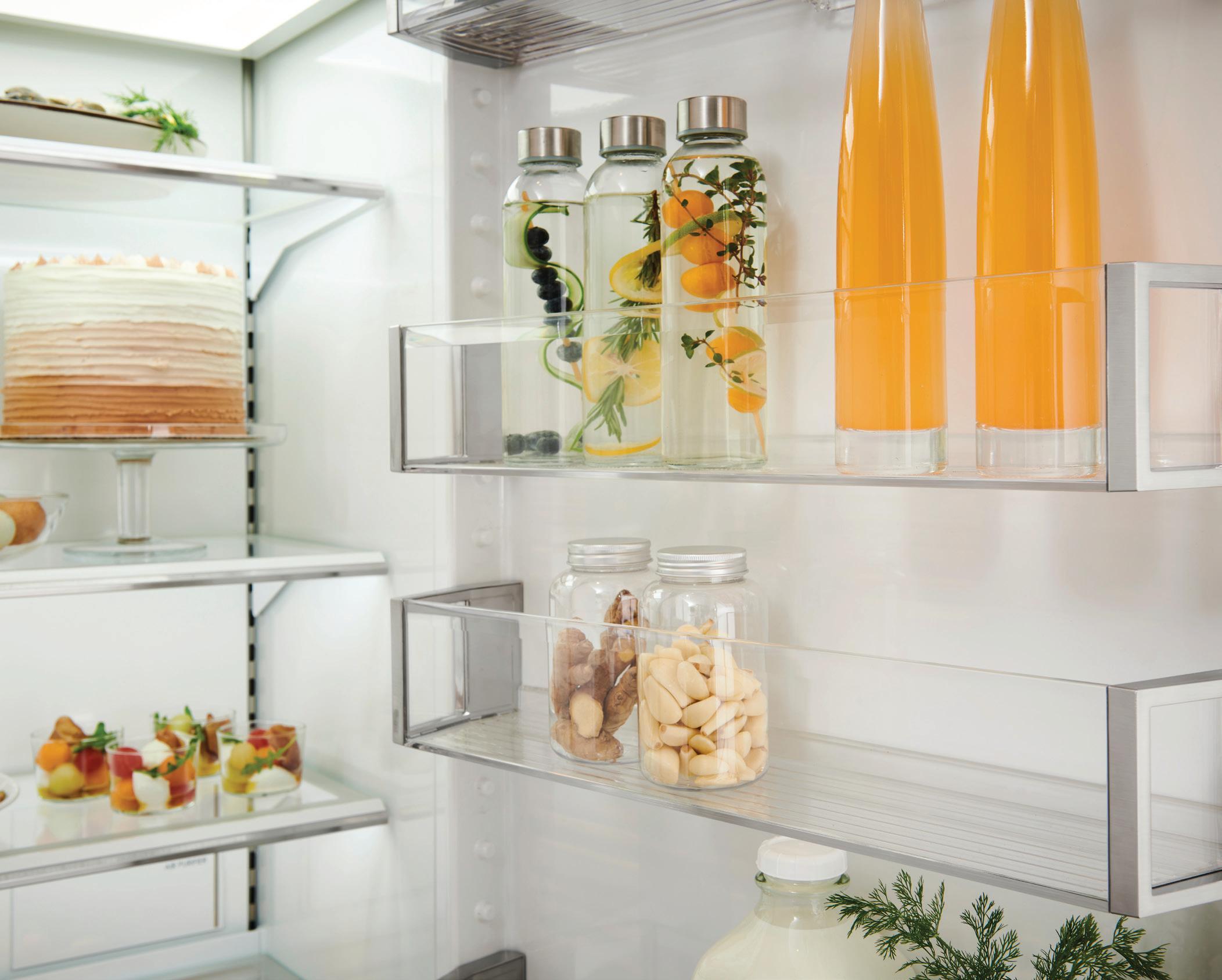
Timeless Design, Fresh Features
SUB-ZERO HAS RAISED THE BAR ON PERFORMANCE AND STYLE WITH NEW FEATURES ACROSS BOTH THE CLASSIC AND DESIGN SERIES.
For the very first time, Sub-Zero is releasing the entirely reimagined Classic and Designer Series products together. With a bevy of innovations and exciting features that apply to both series, Sub-Zero is raising the bar for excellence in refrigeration.
With improved performance features and interior aesthetic enhancements, the Classic and Designer Series provide a single story on food preservation: best in class. Sub-Zero offers the widest selection of refrigeration solutions, providing true design flexibility to complement, anchor, or disappear completely into your décor.
The Classic Series’ iconic grille has served as an irrefutable badge of Sub-Zero’s quality for over six decades. While this distinct symbol of its predecessor’s pioneering performance remains, the completely redesigned Classic Series—with its fresh suite of innovative features—reaches new levels of refinement both inside and out.
The newly reimagined Sub-Zero Designer Series is just as seamless and subtle as before. Now, however, its sophisticated aesthetic rivals only that of its performance. Hidden behind fully integrated panels, you will find a mesmerizing collection of features highlighting the line’s seamless, sophisticated look and superior capabilities.
